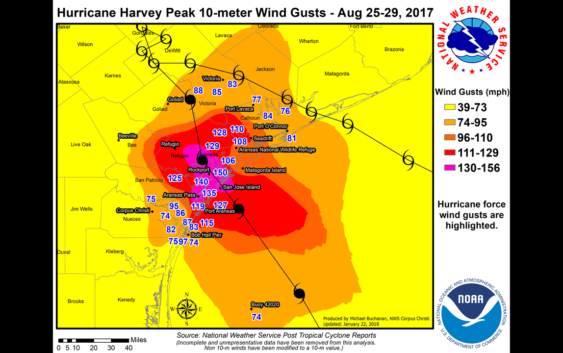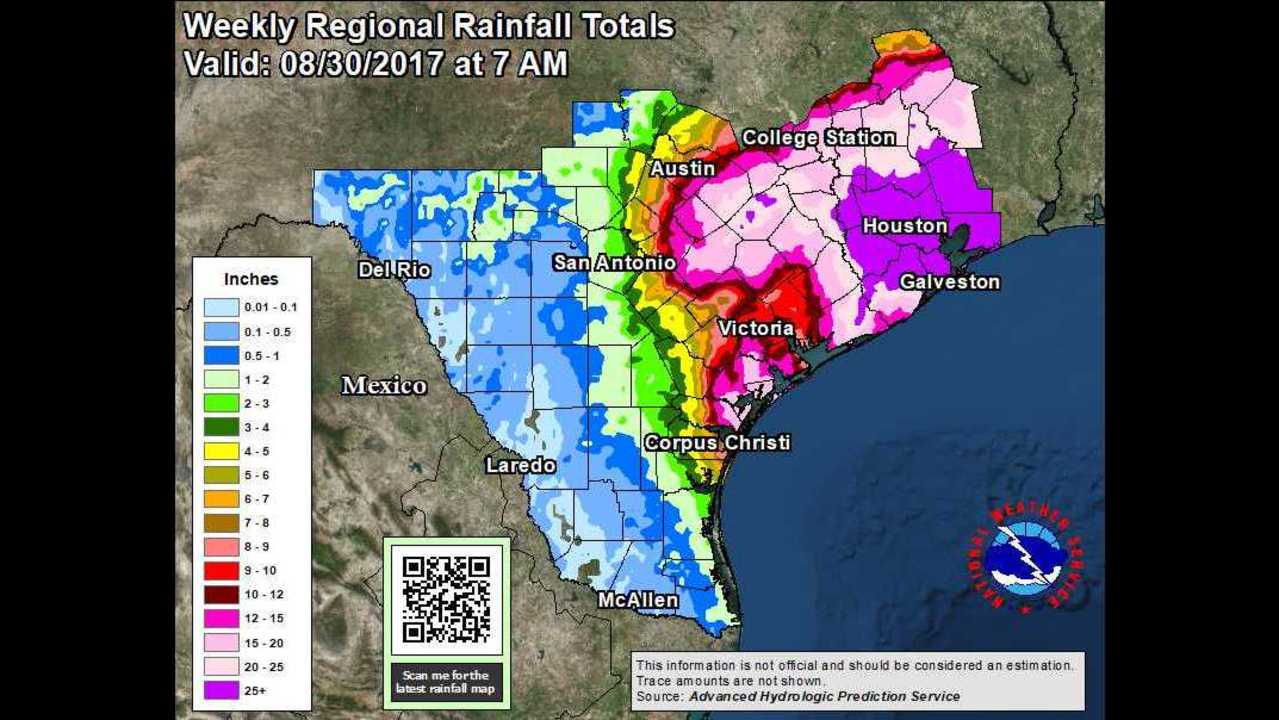- Wildfire in New Jersey Pine Barrens expected to grow before it’s contained, officials say
- Storm damage forces recovery efforts in Lancaster, Chester counties
- Evacuation orders lifted as fast-moving New Jersey wildfire burns
- Heartbreak for NC resident as wildfire reduces lifetime home to ashes
- ‘It’s only going to get worse’: Wildfire risk grows in western North Carolina
Hurricane Harvey: 2 years later

HOUSTON – Two years ago, people up and down the Texas coast were bracing for what would become one of the worst natural disasters in the history of the United States.
Hurricane Harvey made landfall about 10 p.m. on Aug. 25, 2017, on San Jose Island, as a Category 4 storm with winds of more than 130 mph. It quickly made a second landfall near Rockport, Texas, crossed over the Copano Bay and made a third landfall a few miles north of Mission Bay in Refugio County.
Harvey moved inland to just northwest of Victoria where the storm stalled for days, funneling copious amounts of moisture into Southeast Texas. Wave after wave of torrential rain broke records, producing more than 50 inches of rain in the Houston area, resulting in devastating floods.
After nearly five days, Harvey moved east of the region, ending the rains. Flooding would take weeks to subside.
More than 60 people died in the storm. More than 300,000 structures were flooded. More than $120 billion in damage was caused.
PHOTOS: Looking back at Hurricane Harvey
By the numbers
Here are more numbers from the National Hurricane Center that help tell the story of the historic devastation caused by Hurricane Harvey.
132 mph – Harvey’s maximum winds of 132 mph occurred during a several-hour period concluding with its first Texas landfall.
111 mph – The highest observed sustained winds on land were 111 mph near Aransas Pass, with the highest observed gust being around 145 mph near Rockport, Texas.
6 feet to 10 feet – The combined effect of the surge and tide produced maximum inundation levels of 6 to 10 feet above ground level to the north and east of Harvey’s center landfalls in Texas in the back bays between Port Aransas and Matagorda, including Copano Bay, Aransas Bay, San Antonio
Bay and Matagorda Bay.
60.58 inches – Harvey was the most significant tropical cyclone rainfall event in United States history, both in scope and peak rainfall amounts, since reliable rainfall records began around the 1880s. The highest storm total rainfall report from Harvey was 60.58 inches near Nederland, Texas, with another report of 60.54 inches from near Groves, Texas. Both of these values (and from five
other stations) exceed the previously accepted United States tropical cyclone storm total rainfall
record of 52.00 inches at Kanalohuluhulu Ranger Station, Hawaii, in August of 1950 from
Hurricane Hiki. For the continental United States, the previous tropical cyclone rainfall record was 48 inches in Medina, Texas, from Tropical Storm Amelia in 1978.
18 recorded values over 48 inches of rain – It is remarkable that during Harvey, 18 values over 48 inches were recorded across southeastern Texas, with 36 to 48 inches recorded in the Houston metro area. These rains caused catastrophic flooding in Harris and Galveston counties.
6.8 inches of water in an hour – The rain rates observed in these bands on Aug. 26-27, 2017, were exceptional, with 6.8 inches of rain in just one hour documented in southeastern Houston from extremely heavy rain bands training over the same location. The front hardly moved from August 27-28, leading to the extreme rainfall totals in the Houston metro area since the main inflow band originated over the very warm waters of the northwestern Gulf of Mexico, which provided multiple influxes of warm and humid air.

57 tornadoes – Harvey was a prolific tornado producer. There were 57 tornadoes preliminarily reported during Harvey, about half of which occurred near and south of the Houston metro area.
68 people died – Harvey is responsible for at least 68 direct deaths in the United States, all in Texas. Over half of the deaths (36) were in Harris County in the Houston metro area. All but three of the deaths were from freshwater flooding, and none of the deaths can be linked to the storm surge, which is quite remarkable for a category 4 hurricane landfall. Still, Harvey is the deadliest U.S. hurricane in terms of direct deaths since Sandy (2012) and is the deadliest hurricane to hit Texas since 1919. About 35 additional deaths are ascribed to indirect causes, such as electrocution, motor-vehicle crashes and isolation from necessary medical services. Four people were reported injured by a tornado north of Reform, Alabama.
NOTE: Deaths occurring as a direct result of the forces of the tropical cyclone are referred to as “direct” deaths. These would include those persons who drowned in storm surge, rough seas, rip currents, and freshwater floods. Direct deaths also include casualties resulting from lightning and wind-related events (e.g., collapsing structures). Deaths occurring from such factors as heart attacks, house fires, electrocutions from downed power lines, vehicle accidents on wet roads, etc., are considered indirect” deaths.
$125 billion – The latest NOAA damage estimate from Harvey is $125 billion, with the 90% confidence interval ranging from $90 to $160 billion. The mid-point of the estimate would tie Katrina (2005) as the costliest United States tropical cyclone, which was also $125 billion. However, the unadjusted costliest tropical cyclone list is not the most relevant record to examine because of inflation and other cost increases since 2005. A more reasonable comparison uses the Consumer Price Index (CPI)-adjusted technique, which modifies 2005 dollars to 2017. The adjustments make Katrina’s total $161.3 billion in 2017 dollars, leading to Harvey being the second costliest U.S. tropical cyclone. There is, however, still a large uncertainty in the total damage estimate (hence the large confidence interval). This is due to
many factors, including that a majority of the residential flood loss claims are from outside the 500-year floodplain, where there is low National Flood Insurance Program (NFIP) participation, with tens of thousands of claims still outstanding.
300,000 structures – The damage caused by Harvey’s flooding was catastrophic over a large area of southeastern Texas. Over 300,000 structures in that region were flooded.
Copyright 2018 by KPRC Click2Houston – All rights reserved.